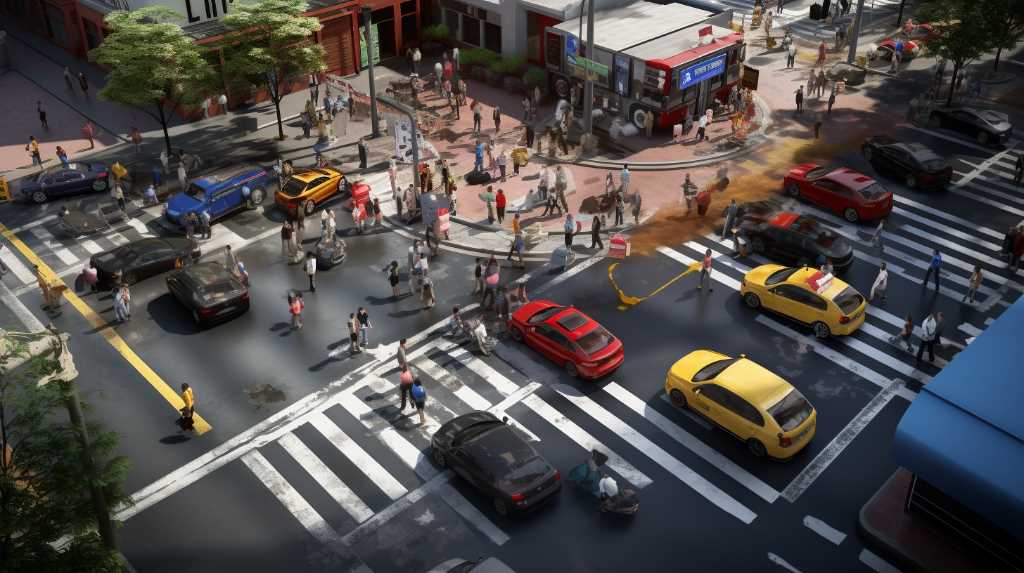
Figuring out who is to blame in a car accident at an intersection requires looking closely at what each driver did. These crashes often happen when drivers don’t follow the rules about who gets to go first, which help keep traffic moving smoothly. It’s every driver’s job to know and follow these rules and any traffic lights that tell them when it’s their turn.
After a crash, it’s important to consider where it happened, how the drivers were acting, and if they were following the law to figure out who is at fault. The investigation involves collecting proof from where the accident happened, what people who saw it say, and sometimes, video from traffic cameras. This information is key to figuring out who caused the accident.
Police, insurance companies, and lawyers all look at this evidence to decide who was at fault. For example, if a driver ran a red light at an intersection and hit another car, the evidence, such as traffic camera footage and eyewitness reports, would help show that the driver who ignored the red light was to blame.
Understanding Right-of-Way Rules
Understanding who goes first at intersections is important because it helps prevent crashes and keeps traffic moving smoothly. The basic rule is that the first car to stop at a four-way stop gets to go first. But if two cars stop at the same time, the one on the right goes first.
Traffic lights are there to tell us when it’s our turn, with a green light meaning go and a red light or a stop sign meaning stop. If you’re turning left, you need to wait for cars coming towards you to pass before you turn. And if there are no lights or signs, the car coming from the right gets to go first.
Following these rules is not just about following the law; it’s about making sure everyone stays safe on the road.
Traffic Signals and Fault Determination
Knowing who has the right-of-way and how traffic lights work is key when figuring out who is at fault in a car crash at an intersection. Traffic lights help control when cars and people can go.
If there is a crash, it’s important to look at the traffic lights to see who was allowed to go. Usually, the person who didn’t follow the traffic light is the one who is at fault.
To figure out what the traffic lights were showing during the crash, investigators might check video from traffic cameras, look at data from the cars, or listen to what witnesses say. They use this information to decide who had the right to go and if not following the traffic light caused the crash.
Types of Intersection Collisions
Intersection accidents happen for different reasons, such as not following the right-of-way rules, being distracted, or driving too fast. A T-bone accident happens when one car hits the side of another car. This often happens because someone didn’t follow the right-of-way rules.
Rear-end accidents happen a lot at intersections, especially when cars have to stop quickly because of traffic lights or a backup of cars. Sideswipe accidents can occur if drivers don’t change lanes or turn correctly. Even though they’re rarer at intersections, head-on collisions can still happen if someone tries to overtake incorrectly or drives the wrong way on a one-way street.
Each kind of accident has its own causes and the person at fault can often be figured out by looking at the traffic laws, the traffic signals, and the road conditions at the time of the accident.
Driver Behavior and Liability
How a driver acts while driving is usually what decides who is at fault in a car crash at a crossroad. To figure out who is to blame, it’s important to look at what each driver was doing right before the accident happened.
Important things to look at are if they followed traffic lights and signs, gave way properly, and kept a safe speed. For example, if a driver goes through a red light and hits another car, they will probably be found responsible. On the other hand, if several drivers were not following the rules, like making illegal turns or not paying attention, they might both be held accountable.
Clear evidence like videos from traffic cameras, what witnesses say, and how the cars are damaged helps to show what happened and decide who was at fault based on how the drivers were acting.
Gathering Evidence Post-Collision
If you’re involved in a car crash at an intersection, it’s important to quickly gather evidence to show what happened. Taking photos of where the cars ended up, any tire marks, traffic lights, and road signs helps explain the situation.
It’s also a good idea to get the names and contact details of any witnesses, as they can describe the crash from their point of view. Try to get video from nearby shops or traffic cameras for an even clearer picture.
Make sure to note any damage to your car and any injuries you have. If there are police there, ask for a copy of their report. This report gives an unbiased view of the crash and is key in figuring out who is responsible.
Conclusion
To figure out who’s at fault in a car crash at an intersection, you need to know who had the right to go first, follow traffic lights, and understand how different types of crashes happen there.
It’s usually about looking at what the drivers did right before the crash. Collecting evidence after the crash is really important to get the full picture of what happened.
In the end, figuring out who’s to blame combines the rules of the road with the facts from the crash.